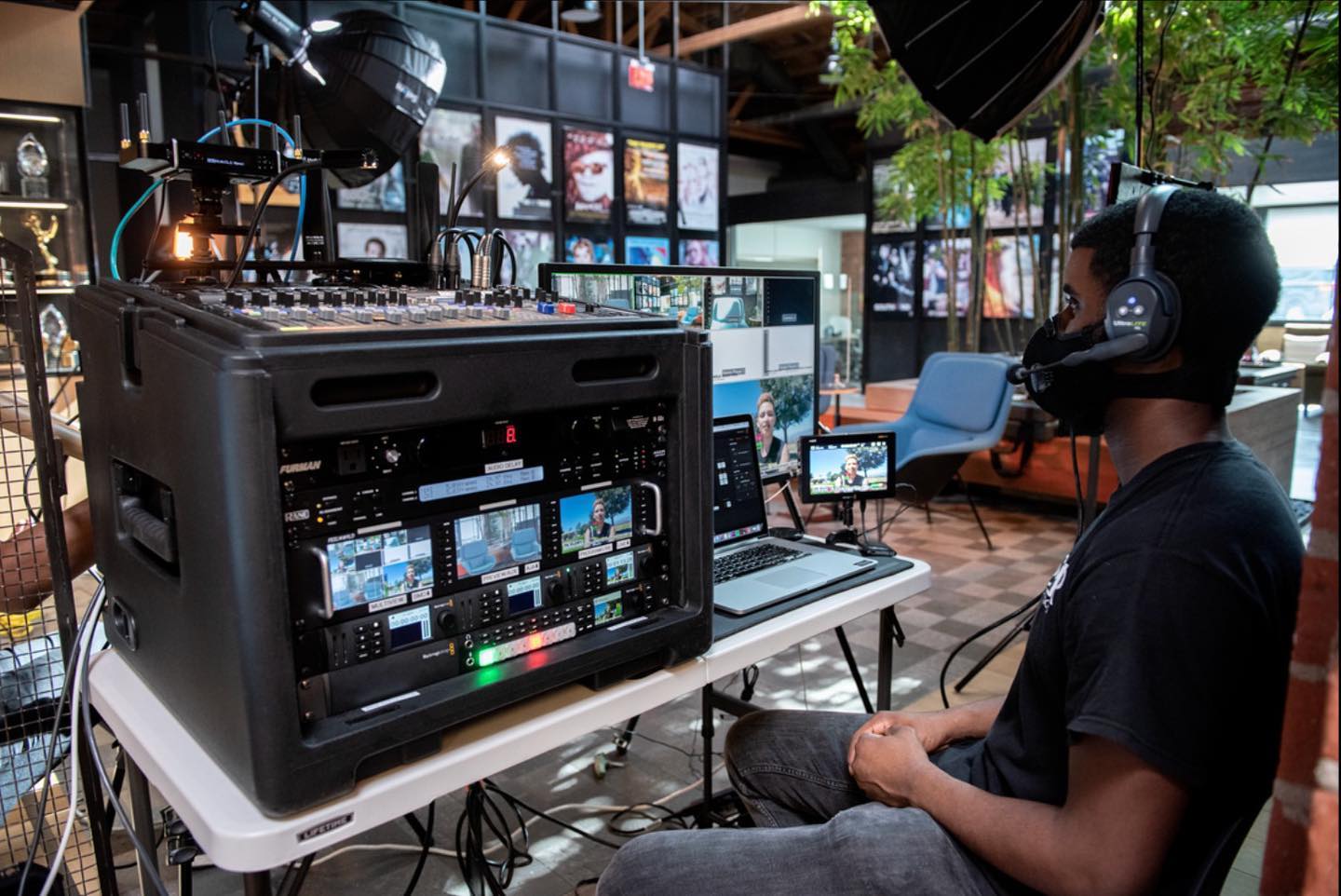
Live streaming online is a great way to spread your message, increase brand awareness, and cultivate relationships with fans and followers.
For these reasons, an overwhelming amount of people stream videos on Facebook, YouTube, and Instagram every day.
Whether you’re a content creator, business, artist, influencer, or even a member of a church or school community
looking to broadcast your life, activities, or live events, this article will help you create an ideal setup consisting of different types of live video streaming equipment.
Basic Kinds of Live Streaming Setups
Wi-Fi Camera Setup
- Smartphone, tablet, or webcam
- Tripod (optional)
- Wi-Fi Connection
Ideal For: Video Blogs and Podcasts
The easiest, fastest way to go live is to use equipment that you already have This basic single-camera setup allows you to connect to
the internet easily, so you can stream directly to Facebook, Instagram, YouTube, and other social media and video gaming platforms
through your installed apps. However, there are certain obvious limitations to this kind of setup, like lower quality videos and plain, continuous recording.
Single HD Camera Setup
- HD Video Camera or Camcorder
- Tripod
- Video Encoder
- Portable Wi-Fi Device
Ideal For: Video Blogs, Podcasts, Small Seminars, and Events
For a more polished-looking stream, consider investing in a professional video camera that captures and streams clearer, higher resolution videos via an encoder (more on this below).
Make sure you go for dedicated video cameras that are designed for extended use as a video camera (DSLRs generally aren’t)
but don’t spend thousands on a high-end camcorder either—unless you know how to use them and plan on using it frequently.
It’s always best to go for a standalone camera that can record and broadcast your video podcast, indoor vlogs, small seminars, and the like on the web.
Multi-Camera Setup
- Multiple HD Video Cameras or Camcorders
- Tripods
- Video Encoder
- Audio Mixer
- Computer Graphics Software
- Portable Wi-Fi Device
Ideal For: Concerts, Church Services, Theater Plays, and Surveillance
For streaming events in larger venues, you’ll need more pieces of video production hardware: more than one HD camera and other
devices that will consolidate audio and video signals for broadcast on the web.
Having multiple cameras enable you to capture video from various angles (from afar and up close) for more engaging content.
Alternatively, lower quality security cameras (or IP cameras) can be used to cover different angles of a room or parts of a house to provide 24-hour surveillance while you’re away.
Determine your video broadcasting needs
The first thing you need to do is ask yourself what you would like to broadcast live. Is it just a regular daily vlog? A small seminar?
A musical concert? Figuring out your specific broadcasting needs will allow you to determine the type of live streaming camera equipment and setup that you should use for the best results.
Invest in tripods
Whether you’re planning a smartphone setup at home or full event coverage, it really helps to have a sturdy and reliable
tripod that will allow you to stream hands-free and ultimately eliminate camera movements that can distract from your content and make your viewers feel dizzy.
Choose the ideal video encoding option
Once you decide to use an actual video camera instead of just your mobile device or webcam, you’ll need an encoding device
that will convert your video into a digital format for broadcast to the web. You can either get a hardware encoder or a computer
with encoding software installed in it. Just remember that the latter requires an adapter or capture device to connect the camera to your computer.
For single-camera setups, the Epiphan Webcaster X2 ($295) encoder is a great option for streaming live to
Facebook and YouTube, and you can even connect it to your camera or mixer easily via HDMI output. Popular
encoders like the Tricaster Mini and the Sony AWS-750 Anycast ($8995) also double as video switchers, so you or your assistant/video producer can alternate camera feeds for different shots.
Consider getting an audio mixer
Good-quality video is nothing when your sound quality is terrible. In simpler setups, one external microphone
connected to your camera may work. But for multiple audio sources, you’ll definitely need a mixer not only to
convert audio signals into digital format for broadcasting but to also have control over the volumes and tones of each of those sound sources.
A mixer like the Behringer XENYX 302USB ($79.99) is super handy a provides high-quality audio processing performance.
Figure out how you will be adding text and graphics
Remember those opening billboards or special intros that you see during live news telecasts? Those will not be possible
without having software that allows you to incorporate desktop animations, overlays (like picture-in-picture effects), and even lyrics and passages that will improve viewer engagement and the quality of your content.
Secure a high-speed internet connection
Video capture is really just half the battle. For a truly successful live stream, you’ll need a Wi-Fi connection that’s not only
fast but reliable. Don’t connect to an in-house internet connection that everybody else is using even if it’s super fast.
The best option is to use a portable Wi-Fi router that will not go wonky in the middle of your stream.
